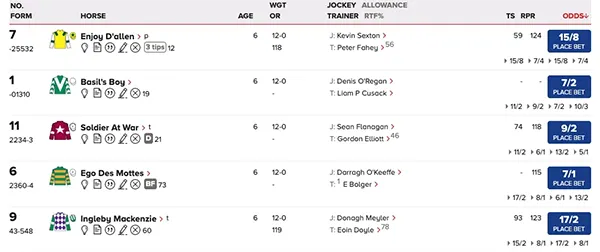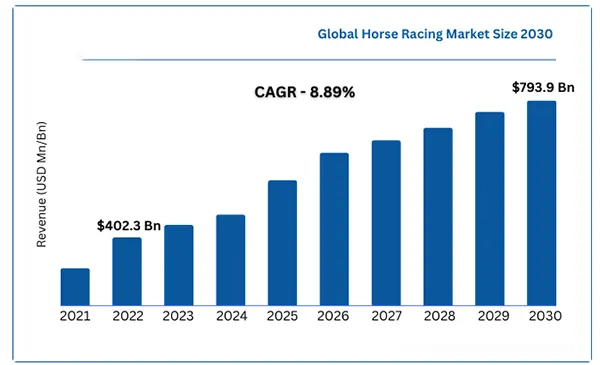Participating in a horse racing sport is an exciting hobby, but for some, it might be difficult to read its betting pamphlet. Professional gamblers know beforehand which horse is the strongest contender to win.
If it is your first encounter with a horse racing paper, it might be terrifying and confusing because of all the random numbers that might look like hieroglyphs. But, trust us, it is much simpler than you might think.
Horse racing is a simple sport, where the only thing you need to predict is which horse will finish first.
The data shown in its pamphlet is simple to understand for a beginner or experienced bettor to get the hang of it.
This article provides details on how to read the horse racing pamphlet without looking like you’re trying to decipher an ancient scroll.
The Basics: What’s All This Jargon?

Horse racing papers are filled with terms or jargon that might as well be in Klingon if you’re not familiar with them. But fear not! Here are a few key terms to understand:
- Win, Place, Show: These are types of bets. Win is for first position, Place is for second, and Show is for third. Simple, right?
There are other more “special” bets called exotic bets like Exacta, Trifecta, Superfecta, Quinella, Daily Double, and more, that might look like they came out of a novel. But they are also very easy to understand.
- Exacta: Pick the first and second horse in a race in exact order
- Trifectas: First, second, and third horse in exact order
- Superfecta: Pick the first four finishers in a race in order
- Daily Double: Pick the winner of two different races
- Quinella: Pick the first and second horse in whatever order.
- Odds: This is how likely the horse is to win, according to people who presumably know more about this than we do.
- Furlong: A unit of distance in horse racing is called a furlong. One furlong equals 1/8 of a mile. Why not just use miles? Because of tradition, that’s why.
Deciphering the Stats
Horse racing papers are a sea of numerals, but you don’t have to be overwhelmed at the beginning.
It will all make sense once it is clear what each number represents. Here are some of the things to know to read a horse racing paper:
- Performance History: Identify how the horse performed in past competitions. Numbers like 1, 2, and 3 indicate their finishing position in recent games.
- Speed Figures: These points indicate how fast a horse ran in previous competitions. Higher numbers = faster horses.
EXPERT TIP
If you see a lot of 1s in a horse’s performance history, it either means the horse is perfect, or it’s been racing against really slow horses. It’s a toss-up.
Just because the horse won all of its previous races, doesn’t mean that it will win again.
You have to do a lot more digging, search more about its competition in previous games, and compare those stats to an upcoming competition.
How to Bet on Horse Racing
Betting on horse races can be as simple or as complicated for anyone. Here are some pointers:
- Don’t Bet Your Rent Money: Seems obvious, but it’s worth mentioning.
- Study the Odds: But remember, lower odds mean more people think the horse will win, which means less money if it does.
- Choose a website: Sometimes if a pamphlet is too complicated, try switching to digital betting.
Websites like TwinSpires.com provide all the insights you need including the meaning of bets, easy-to-read past performances, and beginner-friendly interface.
It is the first place that beginners need to check out before they enter the world of horse racing betting.
The graph below shows the ever-expanding global horse racing market size since 2021. It is predicted to grow its reach to many other countries by 2030.

Few Betting Tips
Always check the track condition. Horses, like people, have their preferences. Remember, not all things are highlighted in the horse racing paper.
Do thorough research and search for the details that might decide the competition winners.
Jockeys matter. A good jockey can make a big difference. After all, look at some of the most successful jockeys like John R. Velazquez, 2024 hasn’t even started yet, and he has 7 top three finishes in 15 races.
You’re Practically a Pro Now (Not Really)
Here we have provided complete information for a beginner’s guide to reading horse racing papers. Remember, it’s all about having fun and maybe winning a few bucks. Or losing a few. It’s a gamble, after all, and nobody can accurately predict the winner of the race.
Frequently Asked Questions
Ans: Yes, they’re called silks, and they represent the horse’s owner or trainer. They’re also great for making fashion statements.
Ans: They’re often a mix of the parent’s names, a play on words, or just something the owner thought was funny at 3 AM.
Ans: Pick a horse by number, decide how much to wager, and place your bet! If you want to aim for a straight victory, you can tell the bookmaker, “£5 on Number 3 please.”